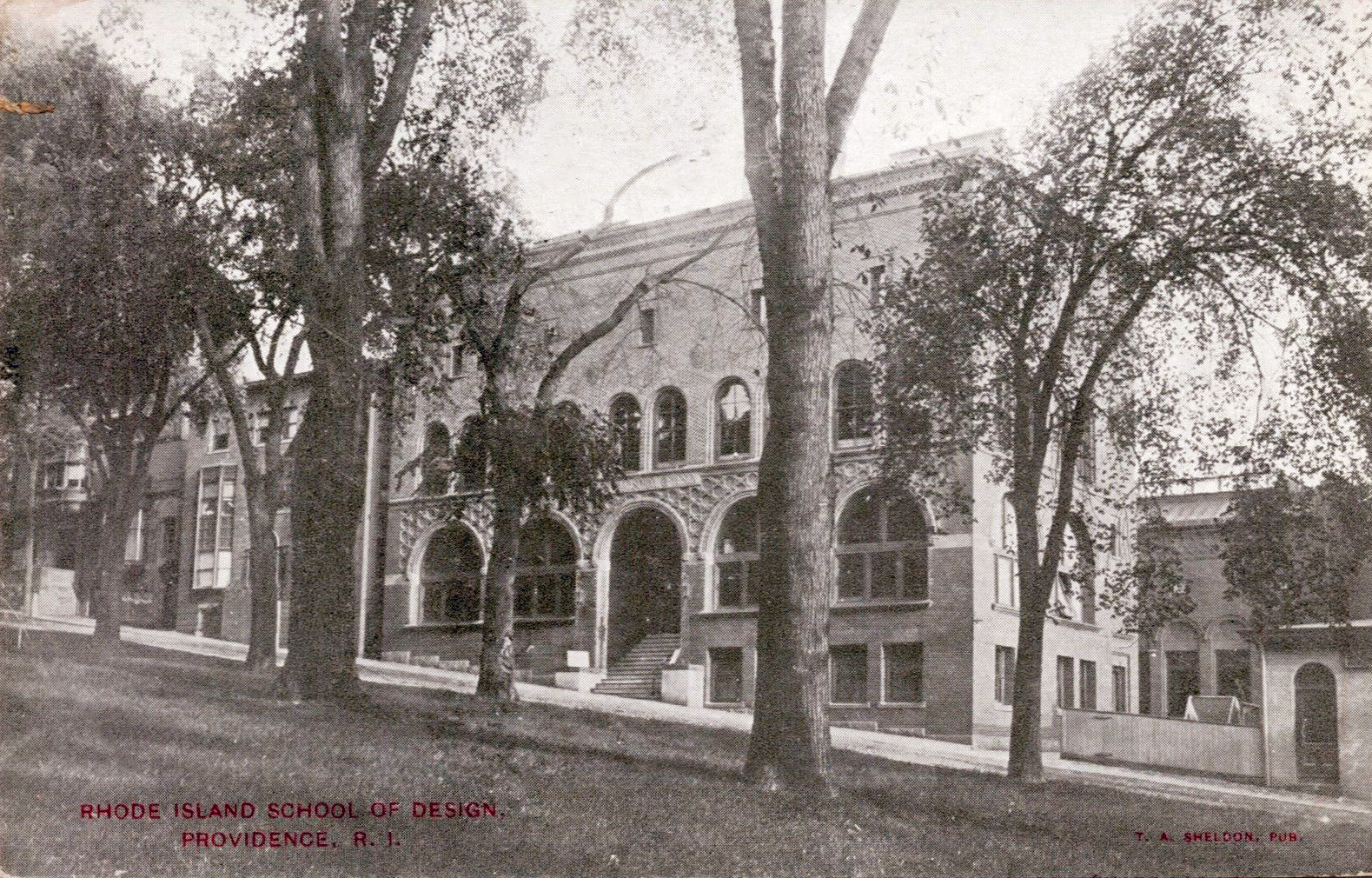The exterior of the Rhode Island School of Design, Providence, in 1908. Opened on the site in 1893, and known as the Waterman Building, at 11 Waterman St.
When Lovecraft was a young boy, at his own fervent request his parents…
took him in 1897 to see a recently opened exhibit of Greek antiquities at the Rhode Island School of Design
The “entire first floor” was initially dedicated to the public exhibitions, in addition to the adjacent colonial-life Museum house (‘entrance through Waterman St.’) seen on the above map. But in 1897 the construction of the Metcalf exhibition galleries behind the Waterman building was completed. When these new galleries opened, the inaugural show is reported to have been an extravaganza of American and European paintings. But there was also a dedicated Greek and Roman Sculpture gallery with originals, casts and photographs. The opening of the latter gallery was accompanied by… “a course of seven lectures on the History of Greek Art before the students of the Rhode Island School of Design in the Winter of 1897-98” given by the President of Brown University. This Sculpture gallery was presumably what Lovecraft ‘the little Ancient’ saw when it first opened. Possibly it was the same as the sculpture court, seen here, that flanked the entrance to the School’s galleries…
The boy Lovecraft became a “constant” visitor in “1897-8-9″…
before long I was fairly familiar with the principal Grecian myths and had become a constant visitor at the classical art museums of Providence and Boston
Evidently the entrance hall was only a taster and there was far more statuary downstairs. This…
was an enchanted world” for him, with its “basement” museum of Greek and Roman reproduction sculpture.
Of course in Lovecraft’s famous story “The Call of Cthulhu” young Wilcox is… “studying sculpture at the Rhode Island School of Design”.
A later additional Eliza G. Radeke Building was opened for RISD exhibitions at 224 Benefit Street, dropping down the hill at the back. Lovecraft attended its grand opening in late April 1926. That was about four months before he wrote “The Call of Cthulhu”. The new building included a collection of Greek and Roman art, and a large new collection of Greek coins, although I’m uncertain if this was a relocation and augmentation of the original Waterman St. Sculpture Gallery, or if it had contents that would have been wholly new to both Providence and Lovecraft. One imagines the curious Lovecraft peering into the probably-new coin cases, and spotting remarkably tentacular designs on the ancient coins…







Pingback: Friday ‘Picture Postals’ from Lovecraft: Rhode Island School of Design 2 | TENTACLII : H.P. Lovecraft blog
Pingback: Friday ‘Picture Postals’ from Lovecraft: Rhode Island School of Design 2 | Tentaclii
Pingback: Greeks in Boston | Tentaclii